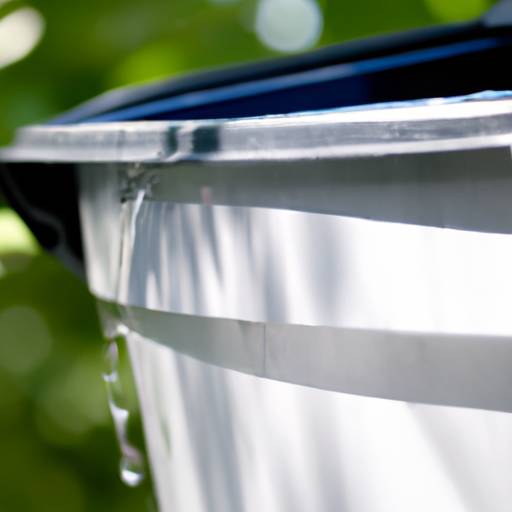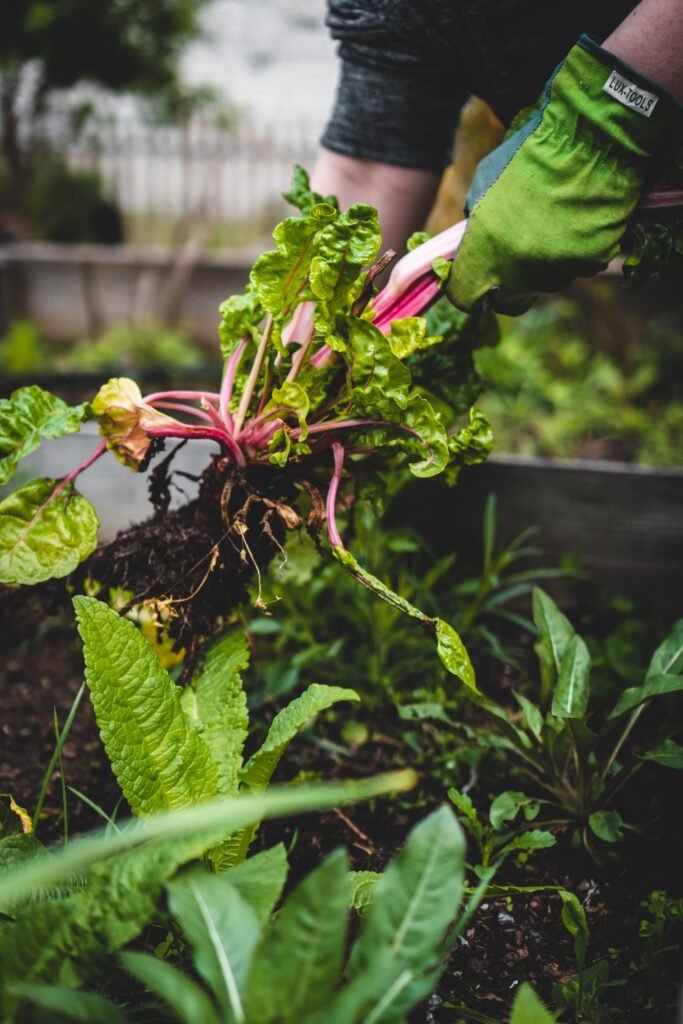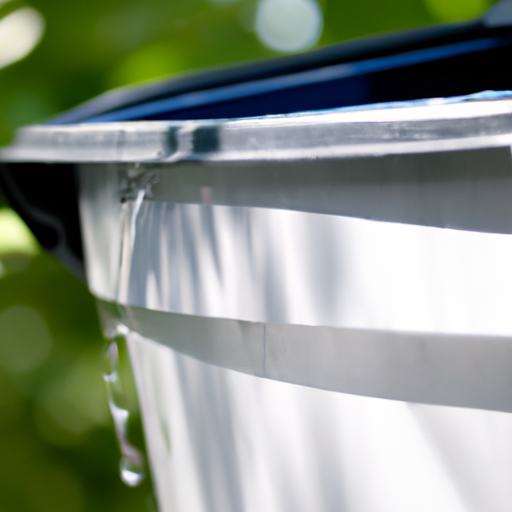Introduction To Rainwater Collection Systems
August 16, 2023 | by rainwatercollectionsystem.com

Are you looking for sustainable water solutions that not only benefit the environment but also offer practical advantages? Look no further than Rain Water Collection System. With our expertise in designing, installing, and maintaining innovative rainwater collection systems, we seamlessly integrate these systems into your property to capture and store rainwater for various uses. From landscape irrigation to toilet flushing, our solutions reduce reliance on traditional water sources, contribute to water conservation, lower utility bills, and leave a smaller carbon footprint. With our commitment to quality craftsmanship, advanced technology, and exceptional customer service, experience the benefits of a greener and more sustainable water future with [Your Company Name].

What is a Rainwater Collection System?
A rainwater collection system is a sustainable method of harnessing and storing rainwater for various uses. It involves the collection, conveyance, storage, filtration, and distribution of rainwater from a catchment surface, typically the roof of a building, into a storage tank or cistern. This stored rainwater can then be used for purposes such as landscape irrigation, toilet flushing, laundry, and more. Rainwater collection systems offer an alternative to relying solely on traditional water sources such as municipal water supply or groundwater wells.
Why Use a Rainwater Collection System?
There are several compelling reasons to use a rainwater collection system. First and foremost, it promotes environmental conservation by reducing the strain on traditional water sources. With growing concerns about water scarcity and drought conditions in many regions, using rainwater helps to conserve freshwater resources.
Another key advantage of a rainwater collection system is the potential for financial savings. By relying on rainwater for non-potable uses, such as irrigation or toilet flushing, homeowners and businesses can significantly lower their water bills. This is especially relevant in areas where water prices are high or where metered water usage is in place.
Furthermore, rainwater is often considered to be of superior quality compared to traditional water sources. It is naturally soft and does not contain the chemicals often found in treated water. This can be beneficial for plants and gardens as well as for certain household appliances such as washing machines.
Overall, using a rainwater collection system offers a sustainable, cost-effective, and environmentally-friendly approach to water management.
Components of a Rainwater Collection System
A rainwater collection system consists of several key components that work together to effectively capture, store, and distribute rainwater.
Rainwater Catchment Surface
The rainwater catchment surface is typically the roof of a building, although it can also be a paved area or any other surface that allows water to be collected. The size and material of the catchment surface will determine the amount and quality of rainwater that can be collected.
Conveyance System
The conveyance system includes gutters, downspouts, and pipes that transport rainwater from the catchment surface to the storage tank or cistern. It is essential to ensure proper sizing and installation of the conveyance system to prevent leaks or blockages.
Storage Tank
The storage tank or cistern holds the collected rainwater until it is needed. It should be made of a durable, non-toxic material such as polyethylene or concrete to ensure water quality and prevent contamination. The size of the storage tank will depend on the water demands and the rainfall patterns in the area.
Filtration System
A filtration system is crucial to remove debris, sediment, and contaminants from the collected rainwater before it is used. This can include filters, screens, and even advanced purification technologies depending on the desired water quality.
Distribution System
The distribution system delivers the filtered rainwater to the intended end-use locations, such as irrigation systems or toilets. It typically includes pipes, pumps, and controls to ensure proper flow and pressure.
Overflow System
In the event of heavy rainfall or when the storage tank reaches capacity, an overflow system allows excess rainwater to be safely discharged. This prevents flooding or damage to the collection system.
Types of Rainwater Collection Systems
Rainwater collection systems can be categorized into two main types: above-ground systems and below-ground systems.
Above-Ground Systems
Above-ground rainwater collection systems are the most common and visible type. They typically consist of a storage tank or cistern placed above the ground surface. This type of system is relatively easy to install and maintain, and it offers flexibility in terms of tank placement and capacity. However, above-ground systems are exposed to temperature fluctuations and may require additional insulation in areas with freezing temperatures.
Below-Ground Systems
Below-ground rainwater collection systems involve burying the storage tank or cistern underground. This type of system offers several advantages, including space-saving, improved aesthetics, and protection from temperature extremes. However, due to the excavation and installation process, below-ground systems can be more complex and costly to install, and they may require regular maintenance to prevent groundwater contamination.
The choice between above-ground and below-ground systems depends on factors such as available space, aesthetic preferences, budget considerations, and climate conditions.

Design Considerations for Rainwater Collection Systems
Designing an effective rainwater collection system requires careful consideration of various factors to ensure optimal performance and water quality.
Rainwater Calculation
Before designing a rainwater collection system, it is essential to calculate the potential water yield based on the catchment surface area and the average rainfall in the area. This helps determine the appropriate storage capacity and the feasibility of meeting the water demands.
Site Evaluation
A thorough site evaluation is necessary to assess factors such as the slope of the land, the proximity of trees or tall structures that could affect rainwater collection, and any potential sources of contamination. This evaluation helps identify any design challenges or modifications required for the system.
System Sizing
Based on the water needs and rainfall calculations, the storage tank size and the overall system capacity should be determined. This ensures an adequate supply of rainwater for intended uses without the risk of overflow or running out of stored water during dry periods.
Water Quality
Maintaining water quality is crucial for rainwater collection systems. Factors such as the catchment surface material, the filtration system, and the storage tank material all impact water quality. It is important to implement appropriate filtration methods and regular maintenance practices to ensure the collected rainwater is safe for its intended uses.
Benefits of Rainwater Collection Systems
Implementing a rainwater collection system offers numerous benefits across different facets of life, including the environment, finances, and water conservation efforts.
Environmental Benefits
By using rainwater instead of relying solely on traditional water sources, rainwater collection systems contribute to environmental conservation. They reduce the strain on freshwater supplies and mitigate the need for energy-intensive water treatment and distribution processes. Furthermore, rainwater is often free from chemicals and additives commonly found in treated water, making it a healthier option for plants, gardens, and certain household uses.
Financial Benefits
Using a rainwater collection system can lead to significant financial savings over time. By decreasing reliance on metered water supply or well water, homeowners, businesses, and institutions can reduce their water bills. Rainwater can be used for non-potable purposes such as irrigation, toilet flushing, and laundry, resulting in substantial cost savings. Additionally, some regions offer incentives or rebates for installing rainwater collection systems, further contributing to financial benefits.
Water Conservation Benefits
Rainwater collection systems play a vital role in water conservation efforts. By capturing and utilizing rainwater, these systems reduce the demand for freshwater resources, particularly during periods of drought or water scarcity. This helps in preserving natural ecosystems, maintaining water availability for essential needs, and promoting sustainable water use practices.

Step-by-Step Guide to Installing a Rainwater Collection System
Installing a rainwater collection system involves several steps to ensure a well-designed and properly functioning system.
Assessing Water Needs
The first step is to determine the specific water needs and intended uses for the collected rainwater. This includes estimating the amount of water required for irrigation, toilet flushing, laundry, or other purposes. It is essential to consider both current and future water demands to ensure the system is appropriately sized.
Selecting the Right System
Based on the water needs assessment and available space, select the most suitable type of rainwater collection system: above-ground or below-ground. Consider factors such as aesthetics, ease of installation, maintenance requirements, and local regulations.
Determining Catchment Surfaces
Identify the catchment surfaces where rainwater will be collected. Typically, this is the roof of a building, but it can also include other paved surfaces. Measure the area of the catchment surface to calculate the potential water yield.
Calculating Storage Capacity
Using the rainfall data for the area and the calculated water yield, determine the storage tank capacity required to meet the water demands. Consider factors such as system efficiency, anticipated dry spells, and any water conservation goals.
Choosing Filtration Methods
Evaluate the desired water quality for the intended uses and select suitable filtration methods. This can include debris screens, sediment filters, carbon filters, or advanced purification technologies. Ensure the filtration system is appropriate for the expected water volume and can be easily maintained.
Installing the Conveyance System
Properly install gutters, downspouts, and pipes to collect rainwater from the catchment surface and transport it to the storage tank. Ensure the system is correctly sized, securely attached to the building, and adequately sloped to prevent leaks or blockages.
Setting Up the Storage Tank
Install the storage tank or cistern at an appropriate location, considering factors such as accessibility, aesthetic appeal, and local regulations. The tank should be level, securely supported, and connected to the conveyance system. If an above-ground tank is used, insulation may be necessary in freezing climates to prevent tank damage.
Installing the Distribution System
Connect the distribution pipes and any necessary pumps or controls to deliver rainwater to the intended end-use locations. Ensure the system is properly sized, adequately pressurized, and provides reliable and consistent water flow.
Setting Up the Overflow System
Install an overflow system to safely discharge excess rainwater in the event of heavy rainfall or when the storage tank reaches capacity. This protects the integrity of the collection system and prevents potential damage or flooding.
Maintenance and Upkeep of Rainwater Collection Systems
Regular maintenance and upkeep are essential to ensure the long-term functionality and water quality of a rainwater collection system.
Regular Inspections
Periodically inspect all components of the system, including the catchment surface, gutters, downspouts, pipes, storage tank, filtration system, and distribution system. Look for signs of leaks, blockages, or deterioration and address any issues promptly.
Cleaning the Catchment Surface
Clean the catchment surface, typically the roof, regularly to remove debris, leaves, or any other materials that may accumulate and hinder the collection of clean rainwater. This helps to maintain water quality and prevent contamination.
Checking the Filtration System
Inspect and clean the filtration system regularly to ensure its proper functioning. Replace any filters or screens as needed to maintain water quality. Regularly monitor the filtration system’s performance, especially after heavy rain events or periods of prolonged dryness.
Monitoring Water Quality
Regularly test the collected rainwater to ensure its quality and safety for its intended uses. Monitor for any changes in color, odor, or taste, which may indicate contamination. If necessary, consult a water quality professional or adjust the filtration system as required.
Pumping and Distribution Maintenance
If the rainwater collection system includes pumps or controls, regularly check and maintain these components to ensure proper operation. Clean or replace filters, check valves, and other necessary parts. Regularly monitor the water pressure and flow to ensure consistency and reliability.

Common Issues and Troubleshooting Tips for Rainwater Collection Systems
Despite proper installation and maintenance, certain issues may arise with rainwater collection systems. Here are some common problems and tips for troubleshooting:
Inadequate Rainfall
During periods of low rainfall, the collected rainwater may not be sufficient to meet the water demands. In such cases, it may be necessary to supplement with alternative water sources or implement water conservation measures.
Overflow Problems
If the storage tank or cistern consistently overflows, it may indicate that the tank capacity is inadequate for the rainfall patterns or the water demands. Evaluate the storage capacity and consider increasing it if necessary. Alternatively, install a larger overflow system to handle excess rainwater.
Clogged Filters
Clogged filters can restrict water flow and decrease the overall performance of the system. Regularly clean or replace filters to prevent blockages and maintain water quality. It may be necessary to adjust the filter cleaning or replacement schedule based on the local environment and the filtration system’s design.
Leaking Tanks
Leaks in the storage tank can result in water loss and potential damage to the surrounding area. Inspect the tank regularly for any signs of leaks or deterioration. Repair or replace the tank as necessary, ensuring proper waterproofing and sealant.
System Freezing
In regions with freezing temperatures, above-ground tanks or exposed pipes may be susceptible to freezing. Insulate the tank and expose pipes to prevent freezing damage, or consider installing an underground system to minimize this risk.
Future of Rainwater Collection Systems
As the need for sustainable water solutions grows, the future of rainwater collection systems looks promising. Advancements in technology, policy support, and public awareness are driving the adoption and development of these systems.
Technological Advancements
Emerging technologies are continuously improving the efficiency, performance, and integration of rainwater collection systems. Innovations such as smart sensors, automated controls, and advanced purification methods are making these systems more user-friendly, reliable, and capable of meeting a wider range of water demands.
Policy Support
Many regions and governments are recognizing the importance of rainwater collection systems for water conservation and sustainability. Supportive policies, regulations, and incentives are being implemented to encourage the installation and use of these systems. This includes rebates, tax incentives, and building code requirements that promote rainwater harvesting.
Public Awareness and Adoption
Increasing awareness about water scarcity, climate change, and the environmental impact of traditional water sources is driving public interest in rainwater collection systems. Homeowners, businesses, and institutions are recognizing the benefits of these systems and are actively seeking ways to reduce their water footprint and promote a more sustainable future.
With growing demand and innovation, rainwater collection systems are poised to become an integral part of water management strategies in both residential and commercial settings. By harnessing nature’s gift of rainwater, these systems offer a practical and environmentally-friendly solution to meet water needs while reducing reliance on traditional sources. Experience the benefits of a greener and more sustainable water future with a rainwater collection system.
RELATED POSTS
View all





